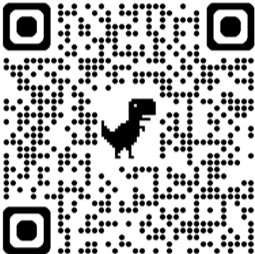Biology Ch 4 Vocabulary
A game to learn the chapter 4 vocabulary. Guide the snake tot the correct answer.
Create multiple-choice games on Wisc-Online and play them on our Chakalaka mobile app!
But that's not all! Explore educational games created by others. Simply search by category or enter agame code number and dive into a world of learning and fun.
Download the Chakalaka mobile app here:

Topics of this game:
- An organism that is able to capture energy from the environment and store it in the chemical bonds of organic molecules.
- The energy-carrier molecule used to power cellular processes; stores energy in the chemical bonds between its three phosphate groups.
- The interconnected disk-shaped pouches in chloroplast.
- The phase of light-dependent reaction in which sunlight energy excites electrons and an enzyme splits water into hydrogen ions, oxygen molecules, and free electrons.
- An organism that must acquire energy by consuming other organisms.
- The energy-carrier molecule used to power cellular processes; stores energy in the chemical bonds between its two phosphate groups.
- A group of thylakoids.
- A series of molecules within the thylakoid that moves energized electrons from photosystem II to photosystem I.
- The phase of light-dependent reaction in which the energy carrier NADP+ is reduced to NADPH.
- The phase of photosynthesis in which sunlight is converted to chemical energy and oxygen is released.
- The energy-carrier molecule.
- The phase of photosynthesis in which a three-carbon sugar is formed.
- The fluid interior of chloroplast.
- The chemical reaction used by living cells to release energy from organic molecules.
- The chemical reaction that captures energy from sunlight and stores it in the chemical bonds of organic molecules.
- The chemical reaction that captures energy from environmental chemicals and stores it in the chemical bonds of organic molecules.
- The series of steps during the light-independent reaction of photosynthesis in which a three-carbon sugar is formed.
- The first series of steps in aerobic and anaerobic respiration in which glucose is broken down into two molecules of pyruvate and there is a net gain of two molecules of ATP.
- The direct transfer of a phosphate group from a substrate to ADP that produces ATP.
- The process of breaking down glucose to yield a maximum amount of ATP that takes place in the presence of oxygen.
- A series of eight reactions that further breaks down the end product of glycolysis (acetyl CoA) to carbon dioxide.
- The breakdown of glucose in the absence of oxygen yielding minimal ATP.
- The use of energy like that of a hydrogen ion gradient to perform work.
- The addition of phosphate group onto a molecule.
- The pathway of aerobic respiration in which the energy released when electrons move down the electron transport chain is used to produce ATP.
- The electron carrier molecule.
- A type of anaerobic respiration that only produces a small amount of ATP but regenerates NAD+.
- A type of fermentation in which ethanol and carbon dioxide are produced.
- The type of fermentation in which lactic acid is produced.
User comments are currently unavailable. We apologize for the inconvenience and are working to restore this feature as soon as possible.
